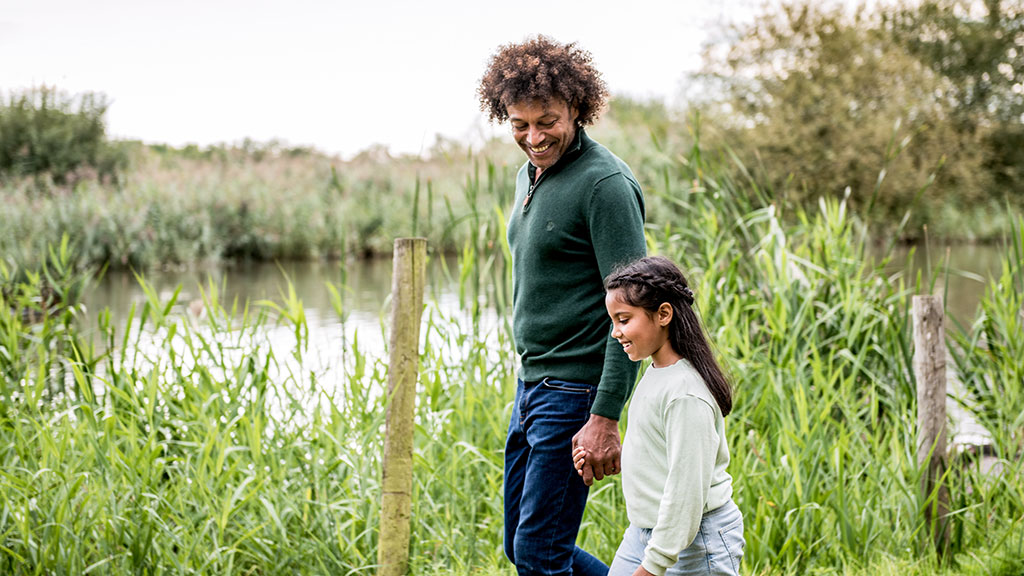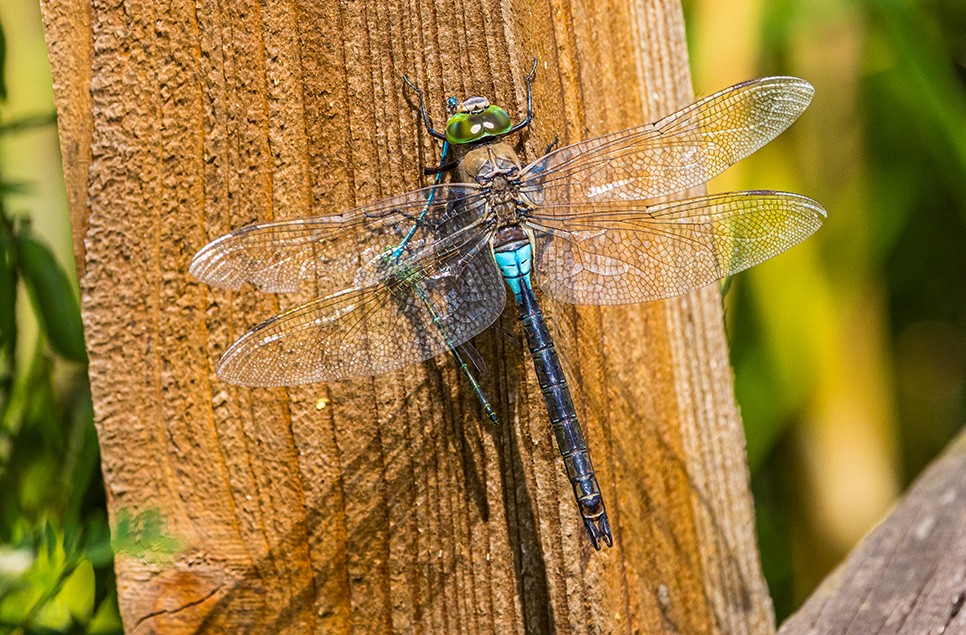The leucistic goose – giant flocks and the glorious glitches within them
Barnacle geese visit the Solway each year in their thousands and amongst the flock are a handful of rare birds that are a result of a genetic flaw.
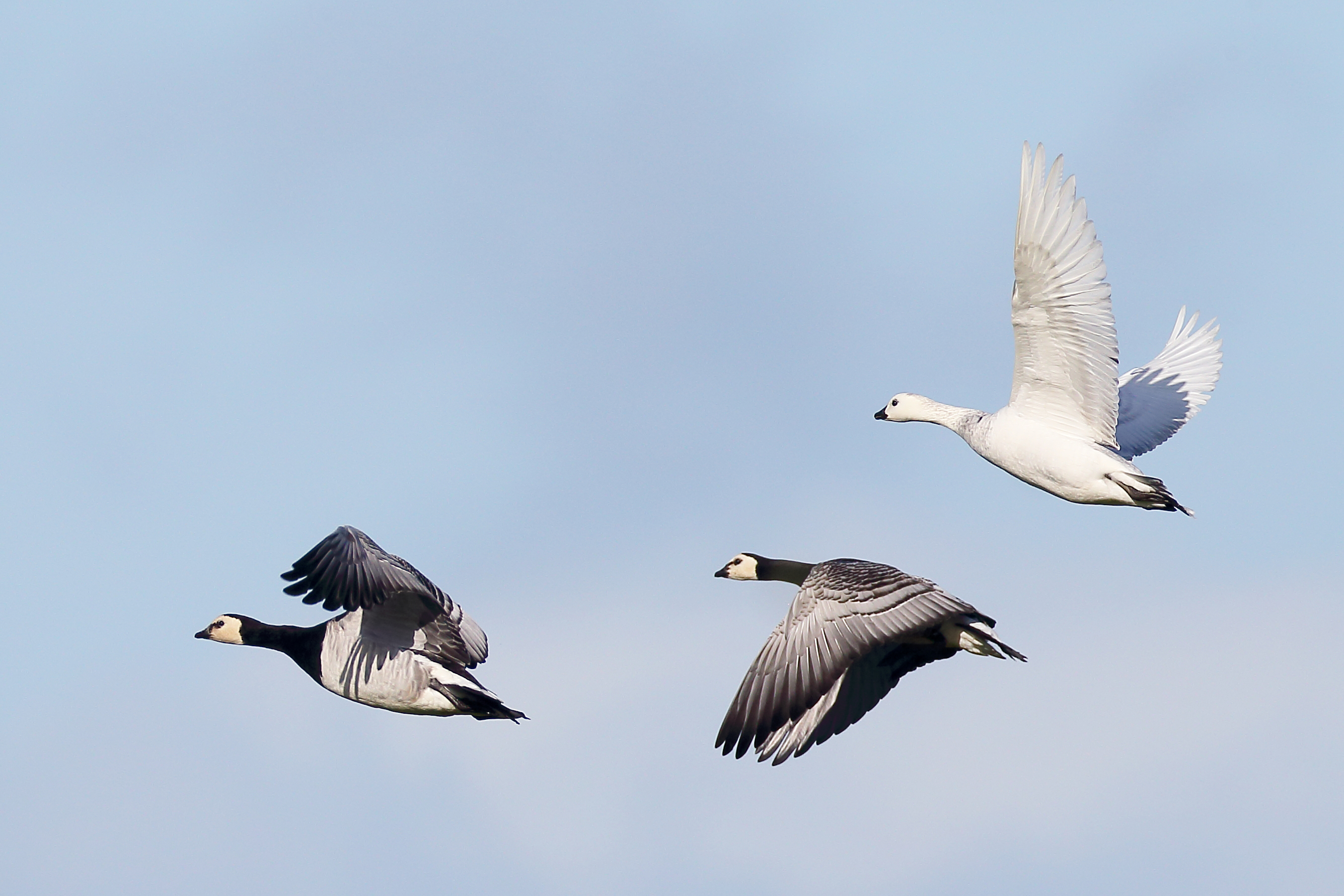
Every autumn, thousands of barking barnacle geese descend on the Solway Firth, having travelled epic distances from the north to escape the Arctic’s icy grip.
Affectionately known as ‘barnies’, they arrive in early October to take advantage of our temperate climes and shelter on the mudflats. At dawn they flock to coastal fields and marshes around Caerlaverock to feast on the grasslands.
The seasonal display of a swirling mass of hungry birds descending on the pastures each morning is regarded as one of Europe’s biggest wildlife spectacles.
Picking out the Quirks
There are three distinct populations of barnacle geese; Svalbard, Greenland and Russian. It is the Svalbard barnacle that winters exclusively on the Solway in their tens of thousands.
The vast numbers of birds that gather on the coastlines off Caerlaverock can make it difficult to pick out individuals from the crowd.
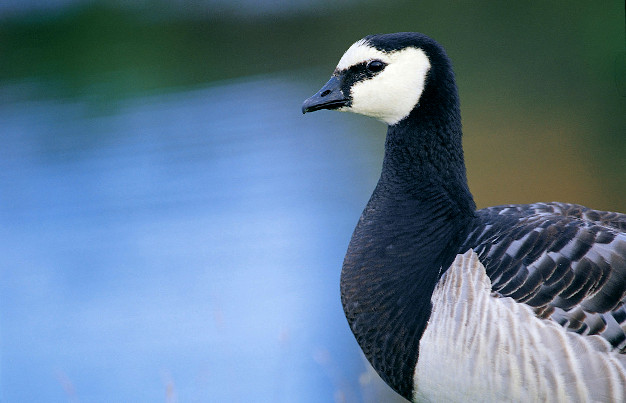
But to neglect to stop and lose yourself in the markings and the movements of these transitory marvels, is to potentially miss the rewards. Unusual birds are much more likely to be discovered in a flock and amongst the Svalbard black and white flurry, can be found rare white geese that stand out amongst the others.
The Leucistic Goose
Individual white barnacle geese have been occasionally visiting Caerlaverock with the flocks for years now. They are characterised by pale feathers, but are not true albinos, as they have black eyes, beaks and legs.
These peculiar birds are the result of a genetic hiccup, called leucism. The standard black, grey and white gene is dominant in barnacle geese. An abnormality results in the white (or leucistic) gene which is double recessive. Of the three distinct breeding populations, we think that it’s only the Svalbard population that has ever thrown up this morph.
The first sighting of a leucistic barnacle goose on the Solway was reported way back in the 1930s and it was shot and stuffed and now resides in the British Museum.
One was seen again in the winter of 1970 and a second the following year. Last year, eight of these extraordinary birds were sighted, a record number to date.
In the summer of 1973, four leucistic geese, including two juveniles, were ringed by a WWT team during an expedition to the island of Spitsbergen.
Unfortunately, one of these birds was shot but the other went on to form a long partnership with a normal mate which produced many traditionally marked and leucistic goslings.
This one special bird is most likely why the gene is still present today, although we have only ever recorded a handful every winter.
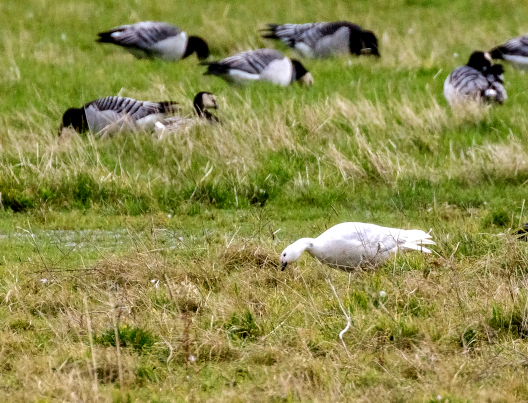
Barnies Bite Back
Barnacle geese now visit the Solway in numbers that could have only been dreamed of 70 years ago.
In the 1940s, no more than 300 Svalbard barnacle geese migrated there each year.
Recognising the region’s environmental significance, Sir Peter Scott set up our reserve in Caerlaverock on the north banks of the Solway in 1971, to help provide a safe haven for the geese over winter.
Their recovery is one of our greatest successes and today, fields and marshes are managed to accommodate the 40,000 breeding population.
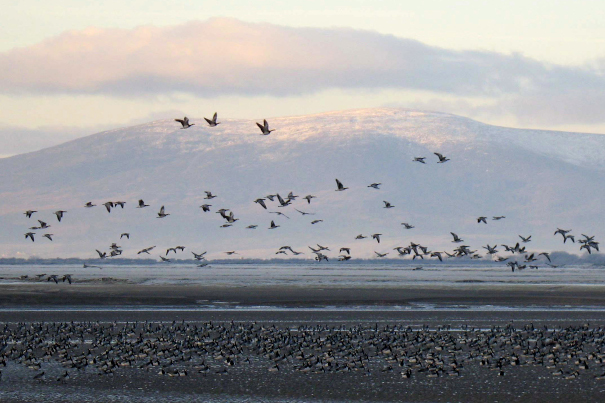
Seeing Them for Yourselves
It’s no great secret that the great outdoors is of great benefit to us.
Bird watchers spend long periods of time in nature without distractions. Studying birds has a meditative quality to it. Observing the birds feeding on the mudflats and tracing an individual bird’s behaviour, habits and interactions allows for contemplation and introspection. It is a fantastic opportunity to reflect or to tune out from life’s often-demanding frequency.
Barnacle geese are social animals and a flock is almost always a flutter with drama. And despite their low numbers, the leucistic geese’s light plumage helps it stand out amongst their darker peers.
There are countless relationships being formed, discoveries to be made and mysteries to be solved. What better distraction is there?
Where Are They Now?
Out of the 90% of the Svalbard population of geese which have settled on the Solway for this winter, five white geese have been sighted so far this year.
There was a buzz earlier this summer when one of the white birds was pictured with a normal mate and two potential recessive gene-carrying goslings on Spitsbergen, a popular breeding spot.
The bird is known to our experts and has been migrating to Caerlaverock since at least 2016. Our staff are on the lookout for the family to see if they successfully make the 2000 mile journey south.
If they make it, the family will stay together until next spring, when they return to Svalbard to breed.
How many in total will we see on the Solway this year?
Watch this space, or even better, go see for yourselves.
